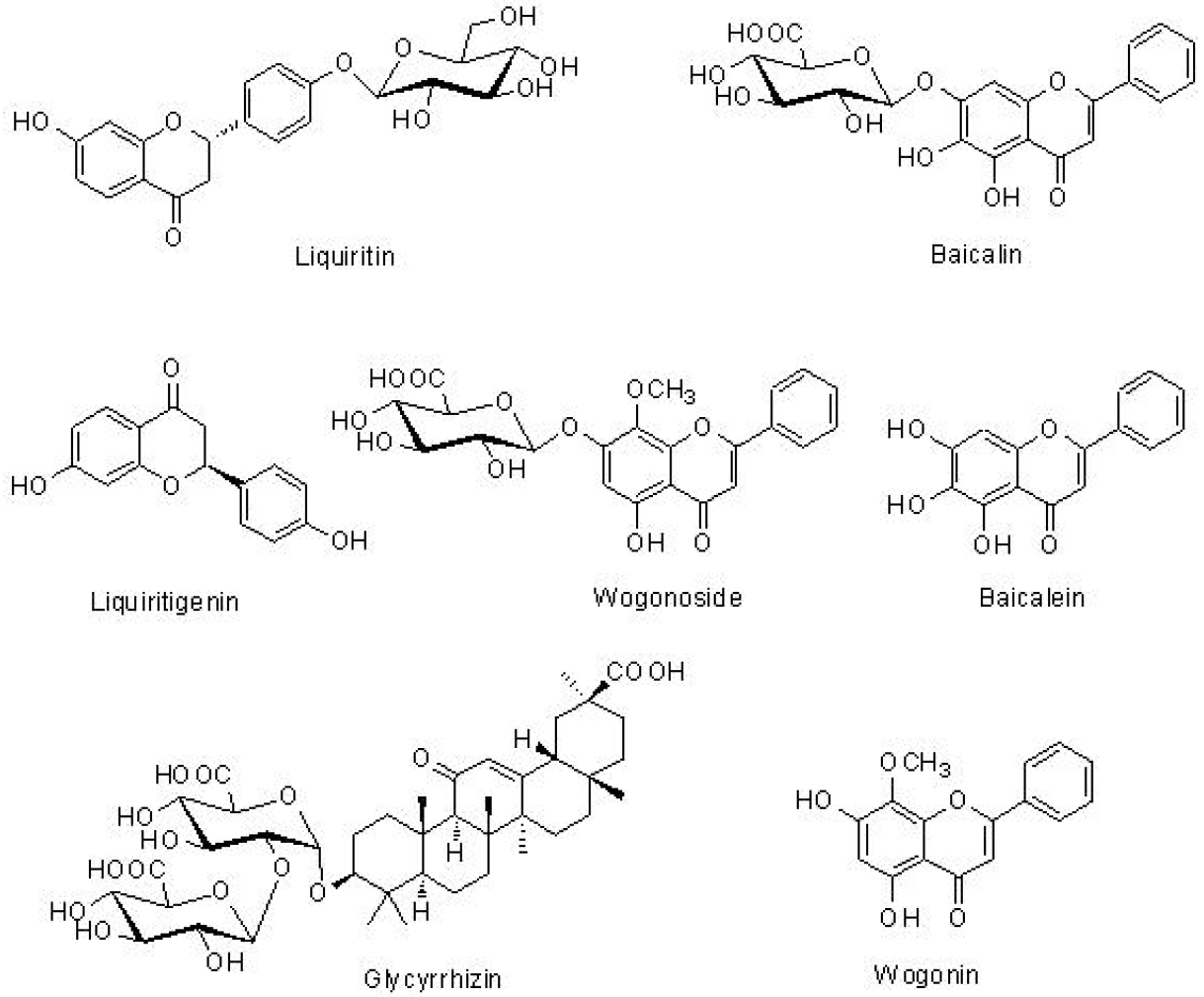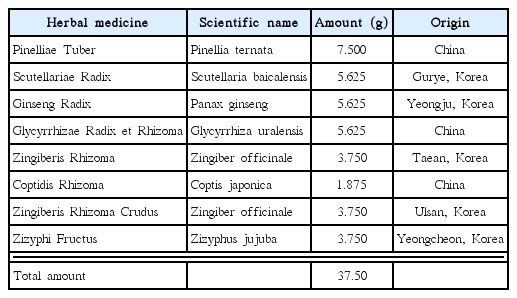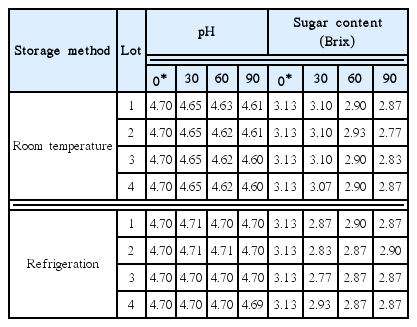Comparative study on stability and efficacy of Banhasasim-tang decoction depending on the preservation temperature and periods
Article information
Abstract
Objectives:
Banhasasim-tang (BHSST) has been used for the treatment of the digestive and gastric diseases in Korea. This study aimed to investigate the stability and biological activities of BHSST decoction depending on the preservation temperature and periods.
Methods:
BHSST decoction was preserved at room temperatures (R/T, 23±1°C) or refrigeration (4°C) for 0, 30, 60 and 90 days. To evaluate the stability of BHSST decoction, pH and sugar content were estimated. In addition, high-performance liquid chromatography (HPLC) analysis was performed to determine marker compounds of BHSST decoction. To evaluate anti-inflammatory effect, nitric oxide (NO) and prostaglandin E2 (PGE2) productions were measured in LPS-stimulated RAW 264.7 macrophages. Antioxidant activity was examined using the assays for 3-ethyl-benzothiazoline-6-sulfonic acid (ABTS) and 1-1-diphenyl-2-picrylhydrazyl (DPPH) radical scavenging activities.
Results:
There was no change in pH and sugar content depending on the preservation temperature and periods of BHSST decoction. Among the major components of BHSST, contents of liquiritin, baicalein and wogonin was reduced time-dependently both at R/T and 4°C. Inhibitory effects of BHSST decoction on NO and PGE2 productions were slightly decreased in a time-dependent manner by 90 days of preservation. In addition, BHSST decoction maintained ABTS and DPPH radical scavenging activities by 60 days while significantly reducing the activities in 90 days of preservation at R/T. By contrast, BHSST decoction had no significant change of ABTS and DPPH radical scavenging activities by 90 days at 4°C.
Conclusions:
Our results suggest that the stability and efficacy of BHSST decoction are maintained for 60 days at 4°C rather than R/T.
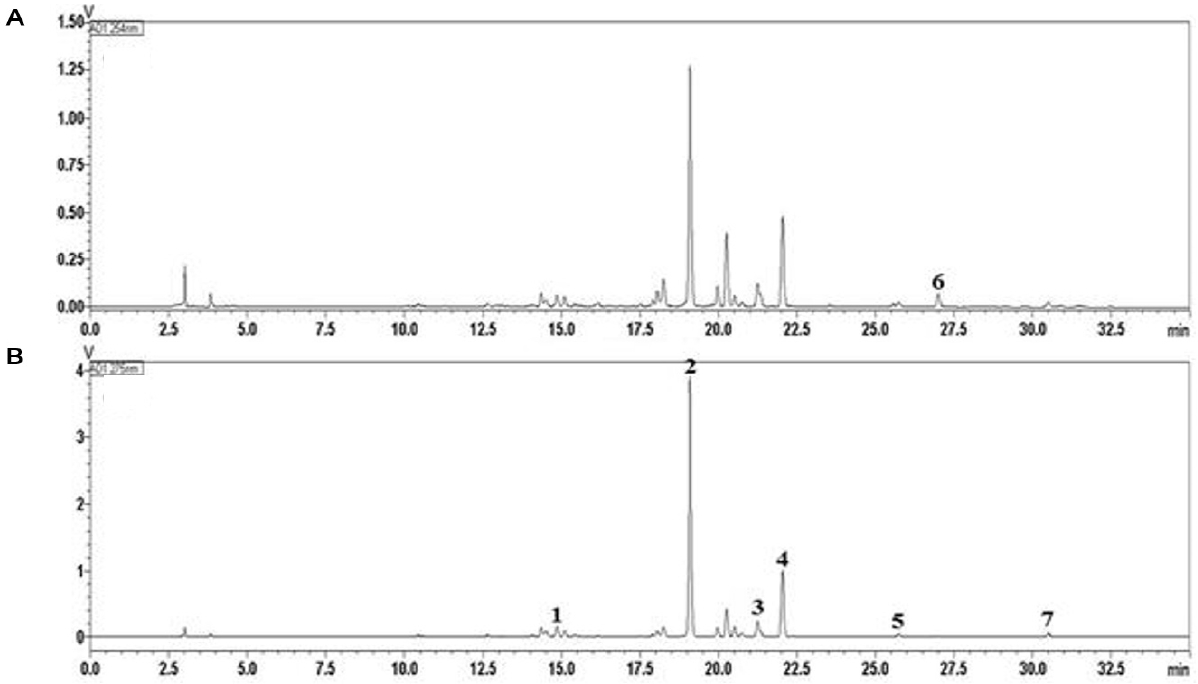
Typical HPLC chromatogram of Banhasasim-tang decoction at wavelength 254 (A) and 275 (B) nm. Liquiritin (1), baicalin (2), liquiritigenin (3), wogonoside (4), baicalein (5), glycyrrhizin (6), and wogonin (7).
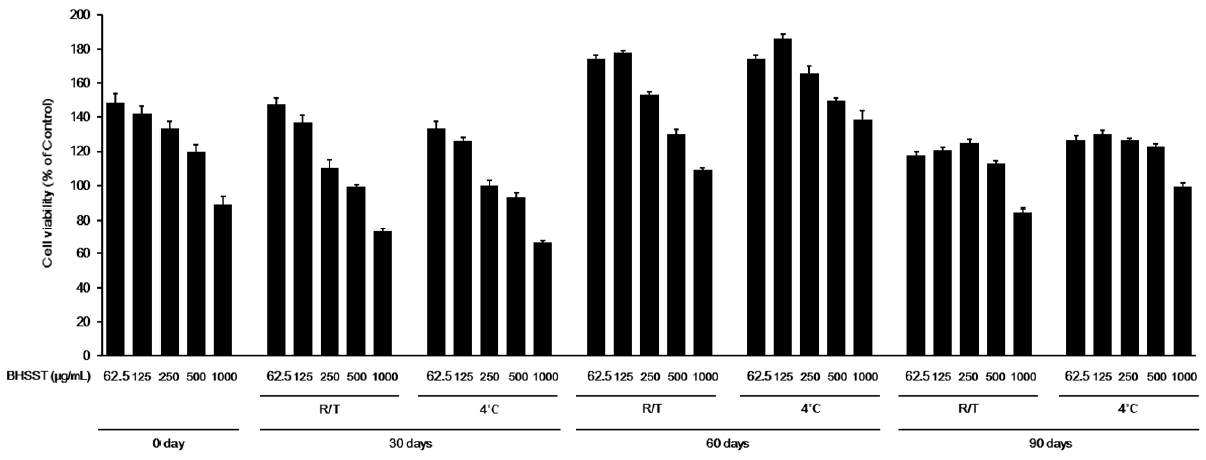
Cytotocicity of Banhasasim-tang stored with different preservation conditions and periods in RAW 264.7 macrophages. BHSST: Banhasasim-tang.
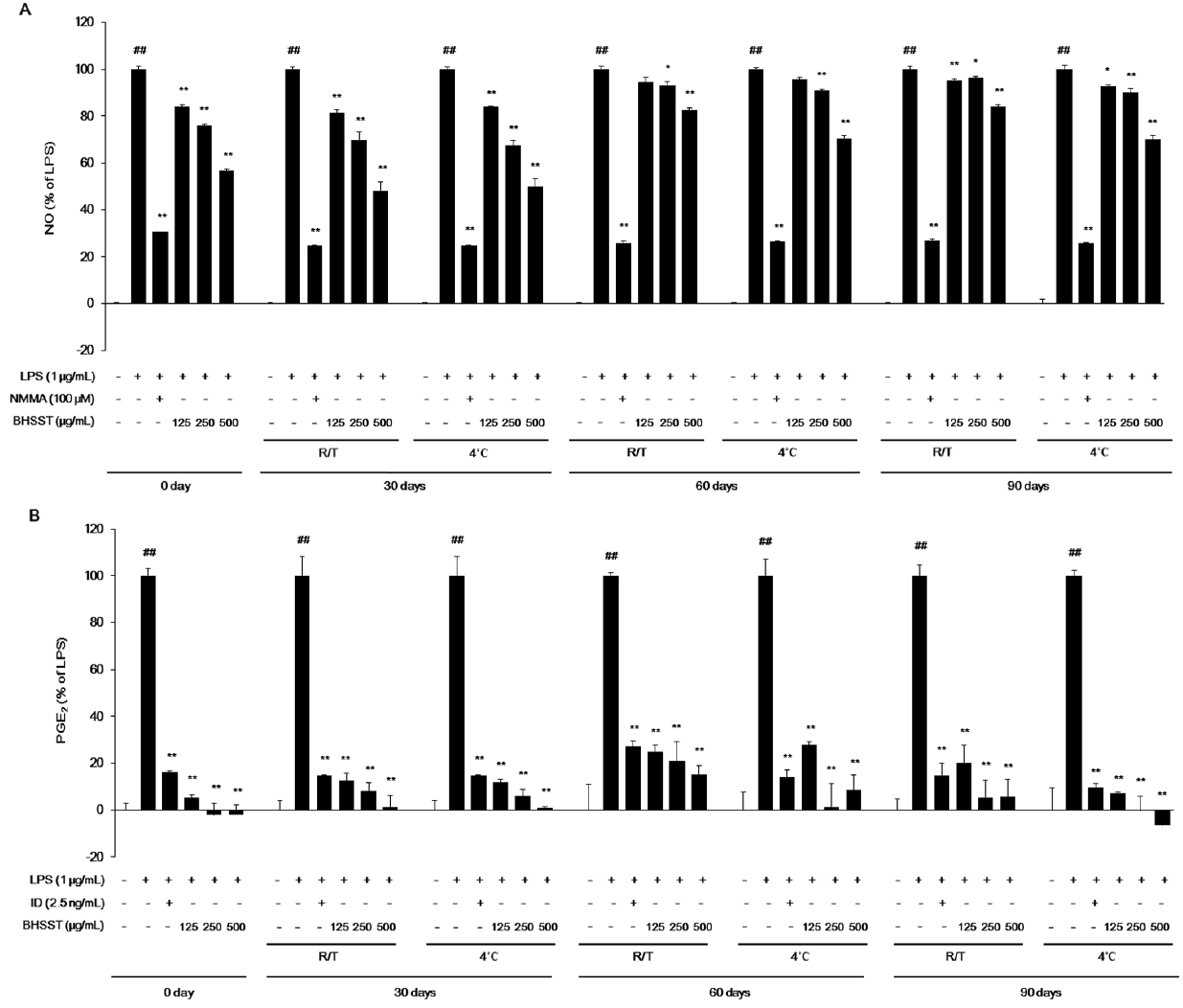
Effect of Banhasasim-tang stored with different preservation conditions and periods on LPS-induced NO (A) and PGE2 (B) production in RAW 264.7 macrophages. Cells were pre-treated with Banhasasim-tang for 4 h and then co-stimulated with LPS (1 μg/mL) for 20 h. The levels of NO and PGE2 released into the culture supernatant were measured using Griess reagent and ELISA kit, respectively. The data are presented as the means ± SEM (n = 3). ##p<0.01 versus vehicle-treated control group; *p<0.05 and **p<0.01 versus LPS-treated group. BHSST: Banhasasim-tang, ID: indomethacin.
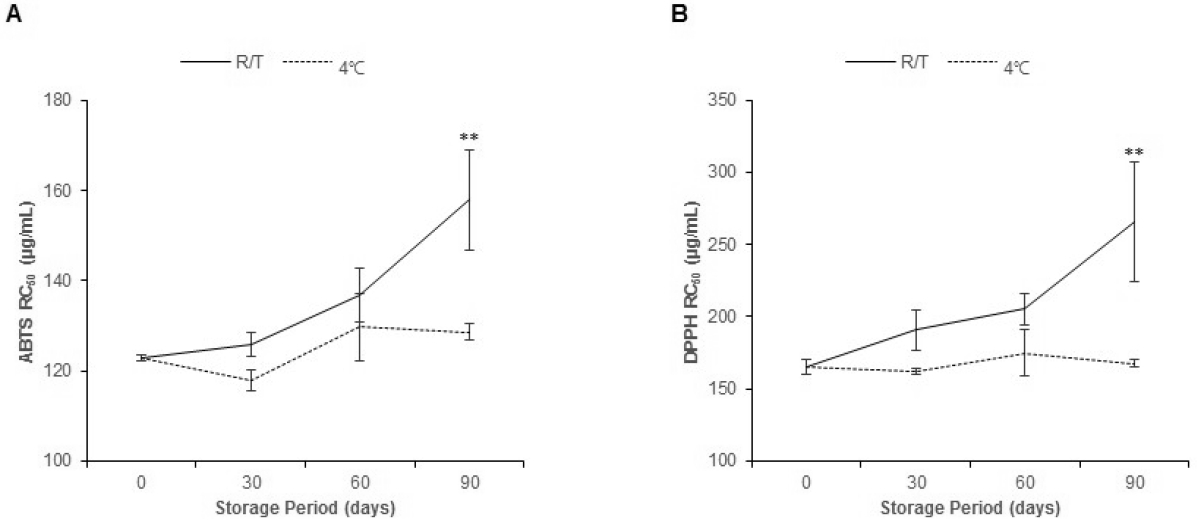
Effect of Banhasasim-tang stored with different preservation conditions and periods on ABTS (A) and DPPH (B) radical scavenging activity. ABTS or DPPH radical solution was added to a 96-well plate containing of several concentrations (50, 100, 200, 400 μg/mL) of Banhasasim-tang. After 30 min of incubation, the absorbance (ABTS; 734 nm, DPPH; 517nm) was measured using a microplate reader. RC50 is concentration of the sample which is required to scavenge 50% of radicals. The data are presented as the means ± SEM (n = 3). **p<0.01 versus 0 days.
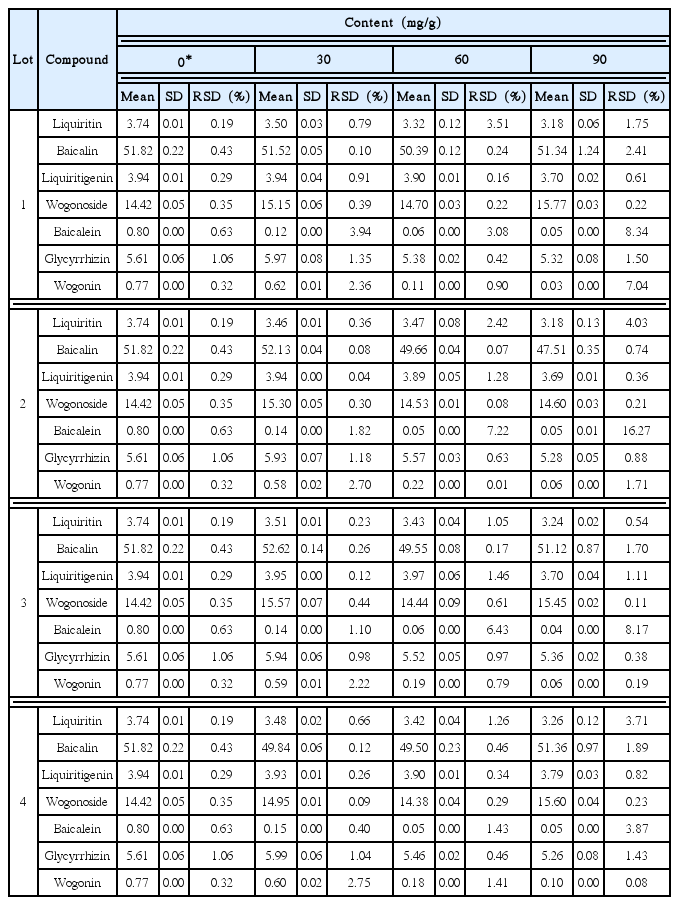
Content of the seven marker compounds in Banhasasim-tang by preservation periods in room temperature
